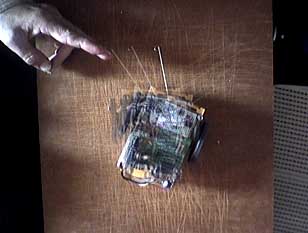Scrum: Subsumption Architecture and Emergent Behavior

PicBot exhibiting emergent behavior
Yesterday's posting on the birth of Scrum generated some questions on Rodney Brooks' subsumption architecture. One could argue that Agile processes emerge architectures by building the simplest possible thing and evolving into more complex behavior by implementing close connection of developers to code, pre-organized patterns of behavior, simple refactoring techniques, no central control, no shared representation, and short daily meetings with face to face communications.
This sounds remarkably similar to the University of Michigan AI Lab Cliff Notes on Rodney Brooks:
Brooks reasons that the Artificial Intelligence community need not attempt to build "human level" intelligence into machines directly from scratch. Citing evolution as an example, he claims that we can first create simpler intelligences, and gradually build on the lessons learned from these to work our way up to move complex behaviors.
Brooks' Subsumption architecture was designed to provide all the functionality displayed by lower level life forms, namely insects. Using a common house fly as an example, Brooks claims that creatures at this level of intelligence have attributes such as close connection of sensors to actuators, pre-wired patterns of behavior, simple navigation techniques, and are "almost characterizable as deterministic machines". The Subsumption architecture provides these capabilities through the use of a combination of simple machines with no central control, no shared representation, slow switching rates and low bandwidth communication.




0 Comments:
Post a Comment
<< Home